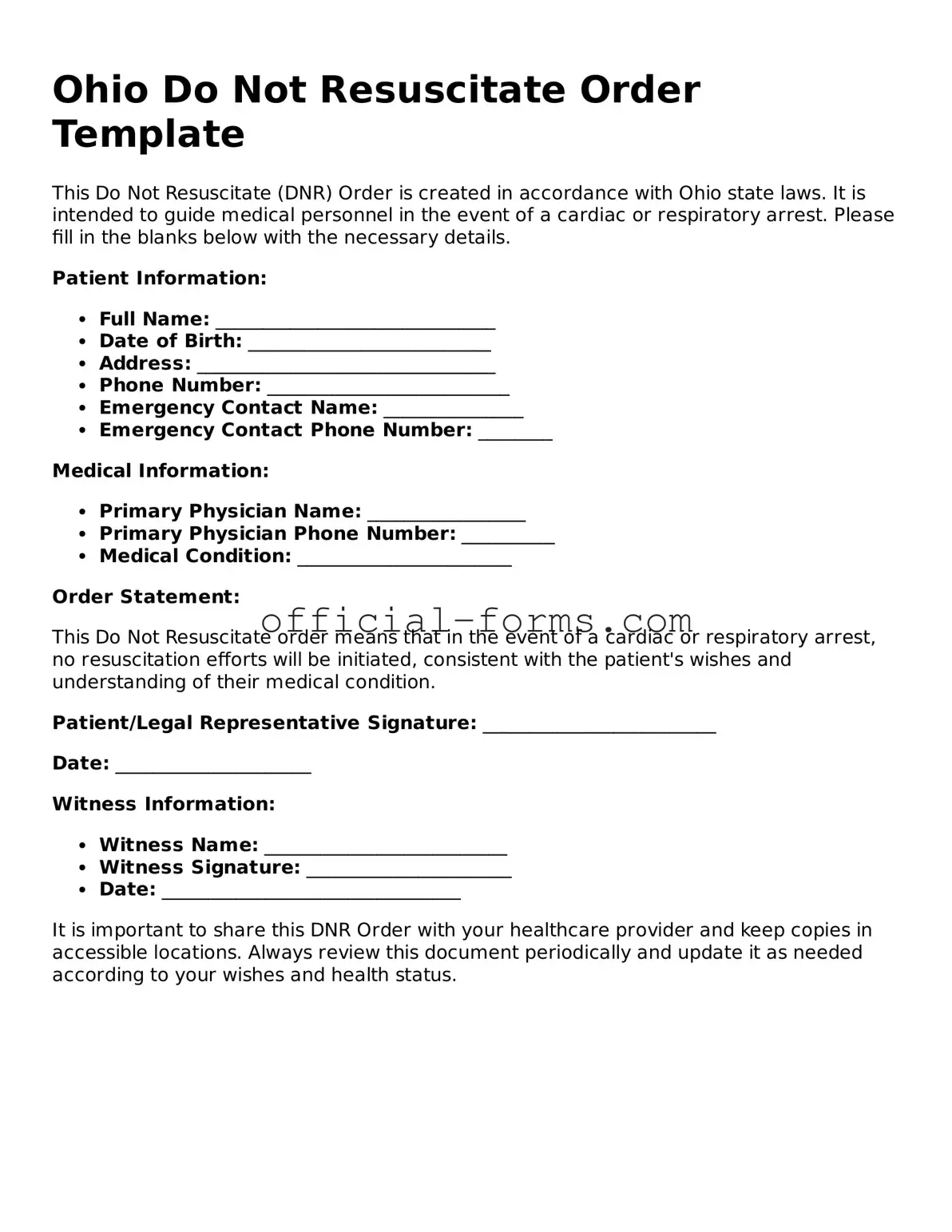In Ohio, the Do Not Resuscitate (DNR) Order form serves as a crucial document for individuals who wish to express their preferences regarding medical treatment in the event of a life-threatening emergency. This form is designed to guide healthcare professionals in respecting a patient’s wishes about resuscitation efforts, particularly when they are unable to communicate those wishes themselves. It outlines the specific circumstances under which a patient does not want to receive cardiopulmonary resuscitation (CPR) or other life-saving measures. The form must be completed and signed by a physician, ensuring that the patient’s decision is informed and legally recognized. Additionally, it is important for individuals to understand that a DNR order is not a one-size-fits-all solution; it can be tailored to reflect personal values and medical conditions. Having a DNR order in place can provide peace of mind for both patients and their families, knowing that their wishes will be honored in critical moments. Understanding the process of obtaining and implementing this form is essential for anyone considering it, as it involves clear communication with healthcare providers and loved ones.
